Shanti Pooja, Griha Shanti Pooja, Shanti Pooja Samagrih, Shanti Pooja Kit, Pooja Items
$36.99 Original price was: $36.99.$28.99Current price is: $28.99.
Shanti Pooja, Griha Shanti Pooja, Shanti Pooja Samagrih, Shanti Pooja Kit, Pooja Items:
Details:
Item: Griha Shanti Pooja
Quantity: 29
Color: Multi
Products:
Chunri
Aarti Sangrah
Diya
Honey
Hawan Samagrih
Karpur
Incense Sticks
Dhoop
Sarv Ausdhi
Saptmritika
Mauli Dhaga
Cotton Wicks
Teel
Akshat
Jaw
Janeo
Yellow Sindur
Chandan
Roli
Abeer
Abrak
Aastgandh
Laung
Elaichi
Haldi
Dona
Supari
Kindly Note: Ghee we cannot Export this item internationally as it is not allowed by the customs department.
So, i request my customers to get it from the local grocery shop.
Conducting Grih Shanti Pooja: An Elaborate Guide
Grih Shanti Pooja, a traditional Hindu ritual performed to bring peace and harmony to a new home or to resolve any existing discord, is a sacred ceremony marked by various offerings and prayers. Here’s a detailed guide on how to conduct Grih Shanti Pooja along with the required samagrih (items):
1. Preparation:
- Choose an auspicious day and time for the pooja, preferably during the day.
- Cleanse the house thoroughly, including the puja area, and arrange all the required items.
2. Required Samagrih (Items):
- Chunri: A colorful piece of cloth used to cover the sacred items during the pooja.
- Aarti Sangrah: A collection of hymns and prayers used during the aarti ceremony.
- Diya: Traditional lamp used for lighting during the pooja.
- Honey: Offered as a symbol of sweetness and prosperity.
- Hawan Samagrih: Mixture of various herbs and ingredients used in the sacred fire ritual (havan).
- Karpur (Camphor): Used for offering to the deities and for aarti.
- Incense Sticks and Dhoop: Used to create a fragrant ambiance during the pooja.
- Sarv Ausdhi: Mixture of medicinal herbs, symbolic of holistic well-being.
- Saptmritika: A blend of seven sacred substances used in rituals for purification.
- Mauli Dhaga: Red sacred thread used for tying around the wrist for protection.
- Cotton Wicks: Used for lighting the diya and other offerings.
- Teel (Sesame Seeds): Offered during the pooja for auspiciousness.
- Akshat: Unbroken rice grains, used as offerings during rituals.
- Jaw (Barley): Another grain used for offerings, symbolizing prosperity.
- Janeo: Sacred thread worn by the person performing the pooja, symbolizing purity.
- Yellow Sindur: Vermilion powder, used for applying tilak (sacred mark) on the forehead.
- Chandan (Sandalwood paste), Roli, Abeer, Abrak: Various powders used for tilak and other rituals.
- Aastgandh: Fragrant paste made from various aromatic substances, used for purification.
- Laung (Cloves) and Elaichi (Cardamom): Offered as part of the sacred items.
- Haldi (Turmeric), Dona (Leaves), Supari (Betel Nuts): Additional items for ritualistic purposes.
3. Performing the Pooja:
a. Preparation:
- Set up the puja area with the Chunri spread over the platform or altar.
- Place all the samagrih items neatly in their respective positions.
b. Invocation (Pran Pratishtha):
- Begin by invoking Lord Ganesha and seeking his blessings for the successful completion of the pooja.
- Invite other deities and ancestors to bless the household with peace and prosperity.
c. Hawan (Sacred Fire Ritual):
- Prepare the hawan kund (fire pit) and light the fire using the hawan samagrih.
- Offer various items into the fire while chanting mantras for purification and blessings.
d. Aarti:
- Light the diya and incense sticks.
- Perform the aarti using the aarti sangrah, chanting hymns and waving the lit diya in a circular motion.
e. Offering Prayers:
- Offer honey, grains, and other samagrih items to the deities while reciting prayers for peace and prosperity.
- Sprinkle akshat and saptmritika around the house for purification.
f. Applying Tilak:
- Apply tilak using chandan, roli, or yellow sindur on the foreheads of family members and guests as a mark of blessings.
g. Conclusion:
- Conclude the pooja by seeking blessings from the deities and expressing gratitude.
- Distribute prasad (blessed offerings) to all present.
4. After Pooja Care:
- Dispose of the used items respectfully.
- Keep the house clean and maintain the sanctity of the puja area.
- It’s advisable to perform Griha Shanti Pooja before moving into a new house or during times of discord to bring about peace and harmony.
Performing Griha Shanti Pooja with devotion and sincerity is believed to invite positive energies into the household and ensure peace and prosperity for all its inhabitants. May this sacred ritual bring blessings and harmony to your home.

Only logged in customers who have purchased this product may leave a review.


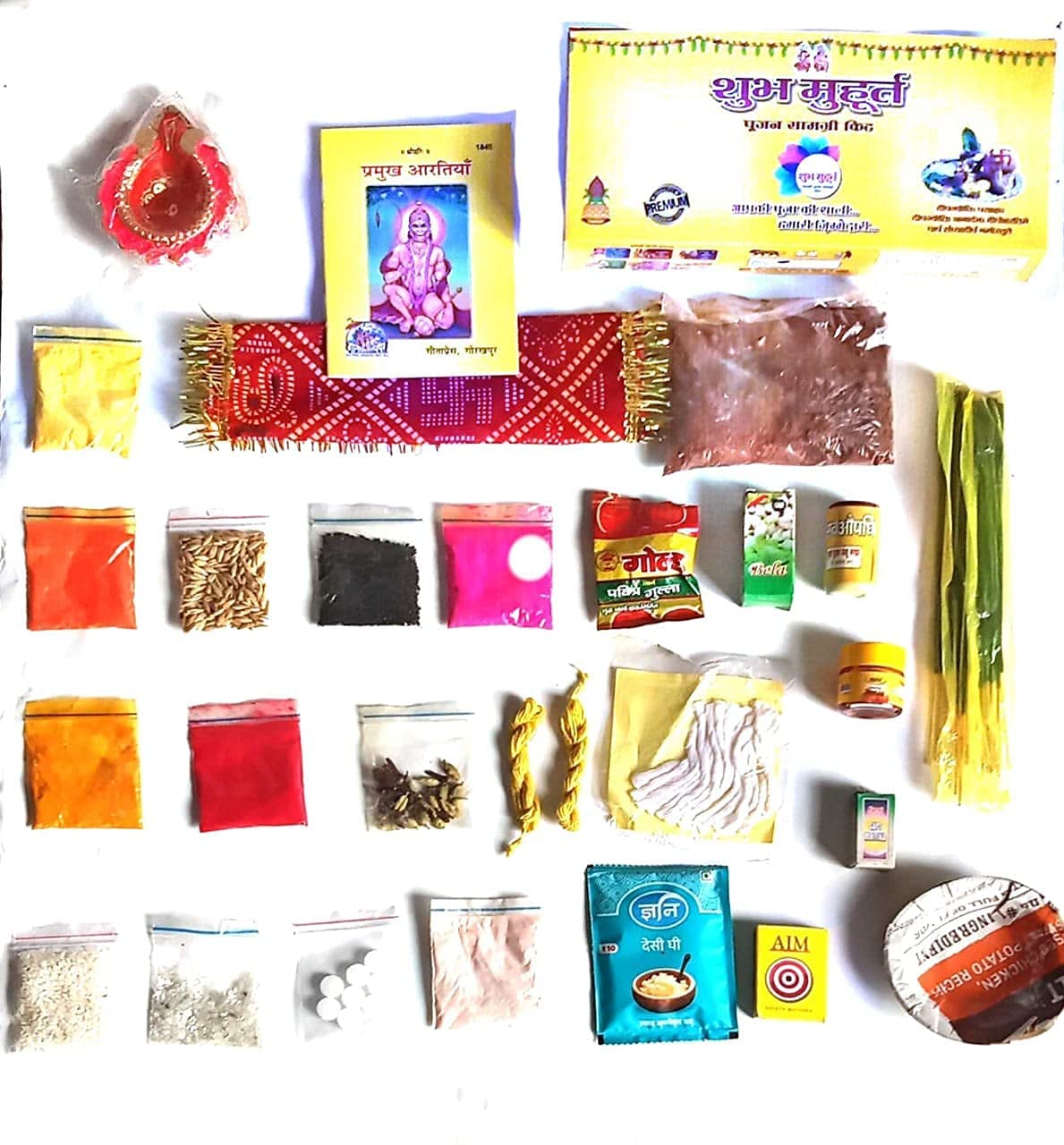
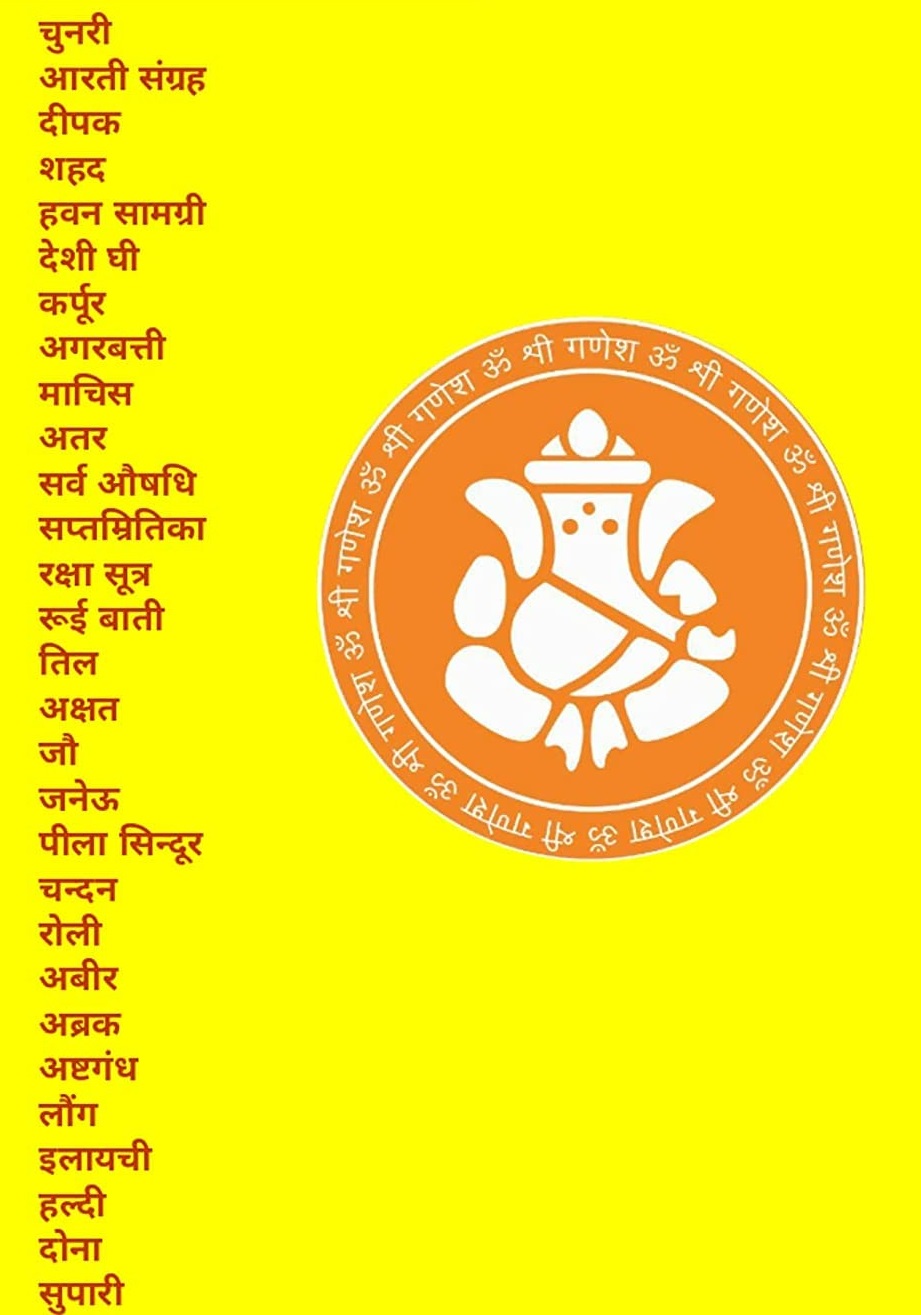


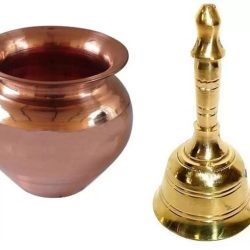

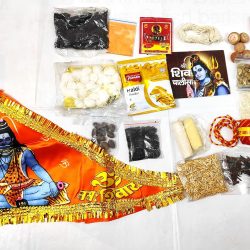
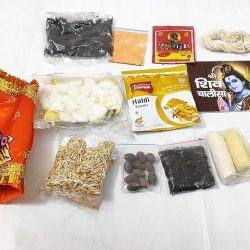
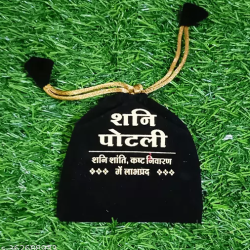
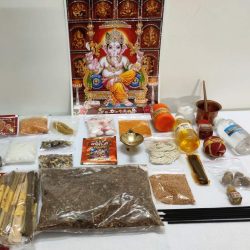
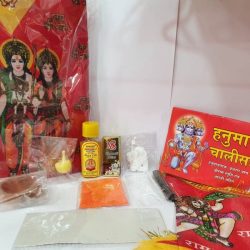
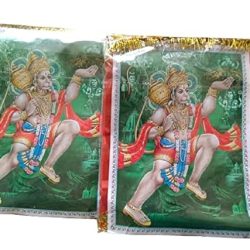




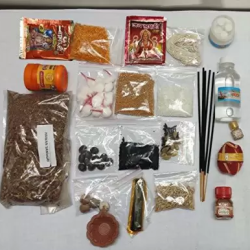
Reviews
There are no reviews yet.